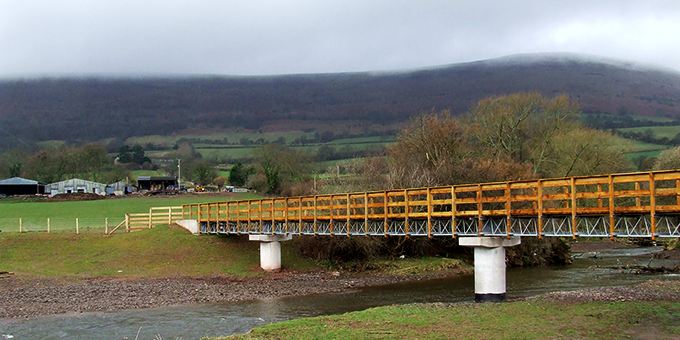
A new footbridge (to replace one that had collapsed) was required to link two sections of a public footpath that crosses the River Monnow. The river forms part of the border between two counties; therefore the project involved the two local authorities. An ecological assessment of the bridge location and its surroundings, and a desktop survey was undertaken, to identify any ecological issues on the site. Apart from the construction of the new structure, the project included bank stabilisation works and some tree reduction (limb removal and coppicing). No issues were identified that required European Protected Species Licences, however potential impacts on certain species were identified.
A specific work schedule had to be prepared to minimise impact on rare aquatic invertebrates found along the river, as well as other species that may have been disturbed by the works. Specialised fencing was installed to prevent otters from entering the construction area and also to prevent disturbance of sand martins on the adjacent riverbanks. An Ecological Clerk of Works was required to supervise some of the works that could have had an impact on wildlife on the site, such as erection of fencing, areas of vegetation clearance and bank stabilisation. The positioning of mitigation and enhancement measures were also supervised, including the erection of dipper nesting boxes and bat boxes.
Location: Monmouthshire / Herefordshire border